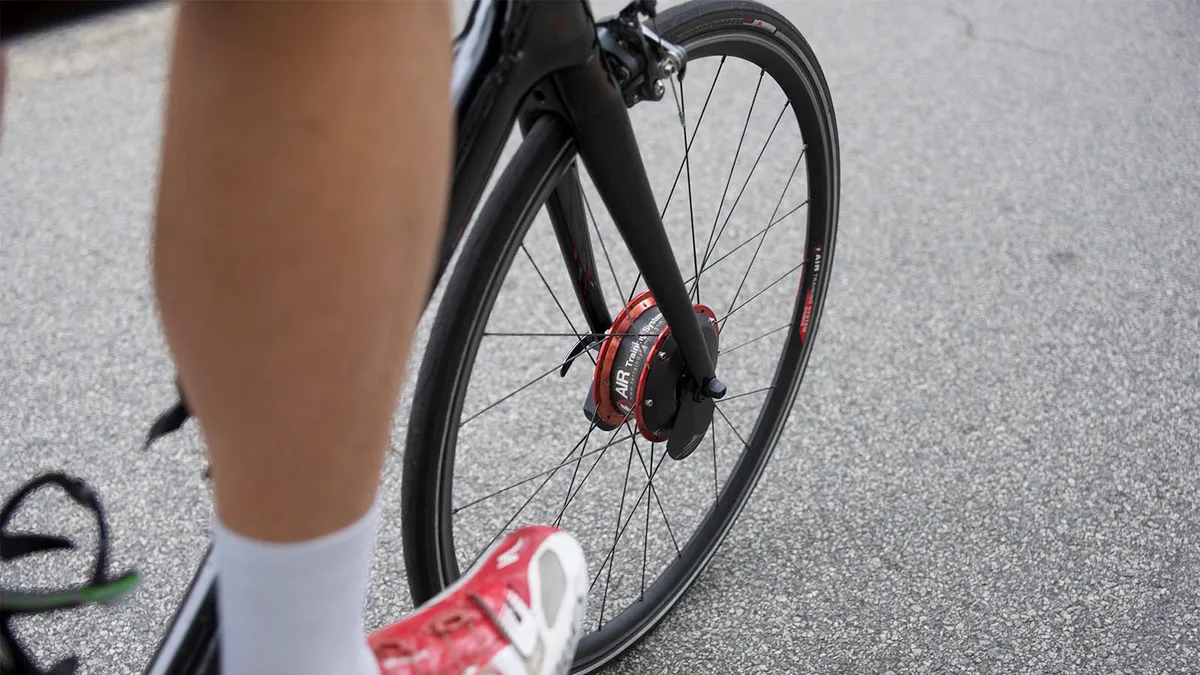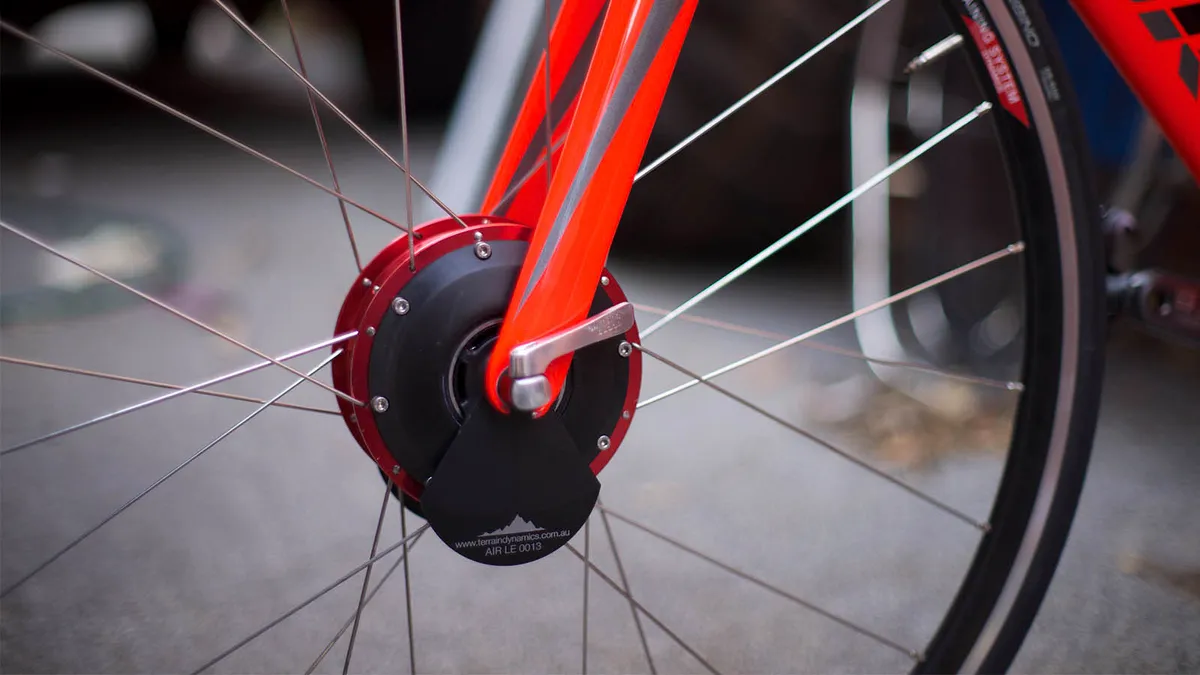As we’ve learned more about the science behind training and getting faster, and the technology to measure effort has improved, workouts have become a whole lot more specific.
However, sometimes the natural terrain in your area isn’t ideal for hitting specific zones, leaving you to suffer the monotony of riding on an indoor trainer.
Frustrated by this, Terrain Dynamics founder Michael Freiberg set out to create a product that would help athletes be able to hit specific heart rate or power zones regardless of hills, wind or any other external factors, and that product is the Airhub.
It’s safe to say that Freiberg knows a thing or two about training and hitting specific zones in a workout given that he took the Omnium World Championship in 2011.

“Over the six years I was with the AIS [Australian Instituted of Sport] I found my training program becoming more and more technical and specific in regards to heart rate zones, power output etc,” Freiberg says on the Terrain Dynamics website.
The unit utilises a Bluetooth Smart connection to an app on your smartphone to set resistance
“I was always looking for that edge and thought surely there was a better way to take back control over how I trained. And so I tried it all. Riding with the brakes on. Fat tyres. Heavy rims. You name it. These all definitely got the watts up but I knew there had to be a better way to make it easier for everyone to have ultimate control over their training and their performance from that.
"The hub uses an electromagnetic brake to create resistance, just like a Wahoo Kickr or other smart trainer, but those trainers usually weigh about 15-20k. So we've squeezed a lot in there for the weight," Freiberg told BikeRadar.

The unit is completely self-generating, so it doesn’t need to be charged or supplemented with batteries, and is contained inside a carbon hub. It only comes as a complete wheel strung into an alloy rim with 24 spokes, and claimed at 1.5kg it's not light either, but that’s sort of the point.
For the moment, the unit utilises a Bluetooth Smart connection to an app on your smartphone to set resistance, though Freiberg tells us there is integration with Garmin Connect in the works.
While this product is not for everyone, we can definitely see it being useful for riding with friends or family who may not be able to put out the same power as you, keeping your wattage up should your local climb or other terrain not be long enough to complete a specific interval or completing an interval workout somewhere where the speed that would accompany that wattage isn’t safe to do so.

With up to an additional 100 watts of resistance, the Airhub is a bit like your own personal headwind or hill. There are four training modes: Manual, Heart Rate, CDA and Power Mode.
Manual mode, as the name implies, allows you to define how many additional watts of resistance are needed for your training — think riding with your brakes on.
In Heart Rate mode the unit applies and automatically adjusts resistance in real time to help you maintain a specific zone.
CDA mode is designed to simulate headwinds, so power and resistance is based on an exponential drag curve.
Finally, in Power mode you can link to your power meter and once you define a training power in the app it will regulate resistance to keep you at your training wattage — similar to Heart Rate mode.
Like most products that offer marginal gains in cycling, the Airhub is not cheap and comes in at AU$1,950 (approx £1,213 / $1,500) plus shipping.
